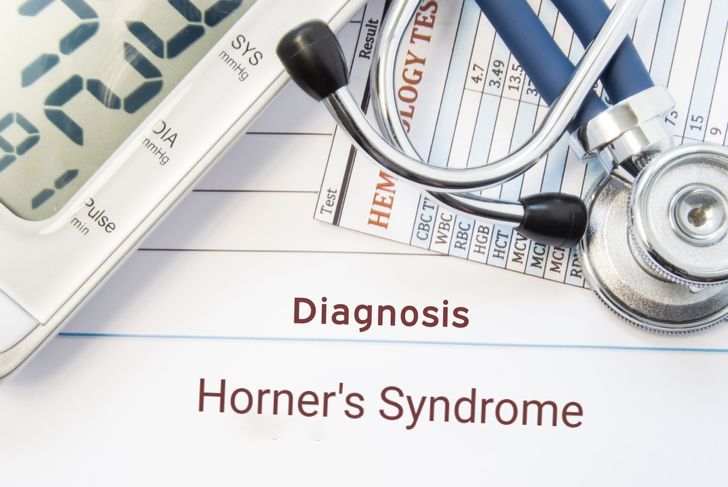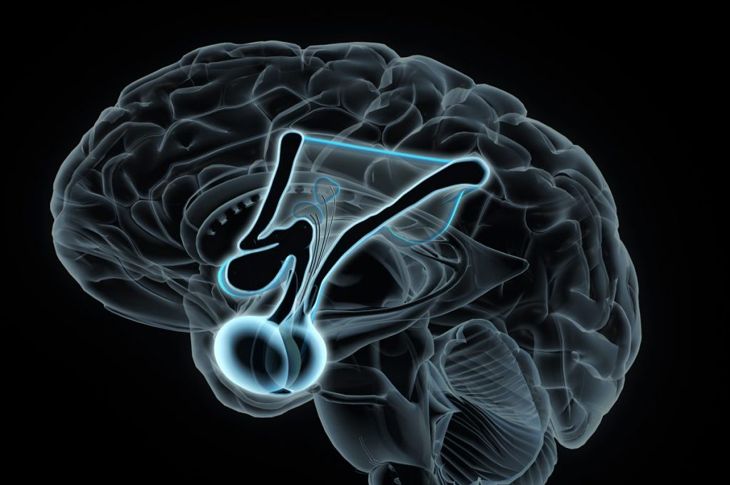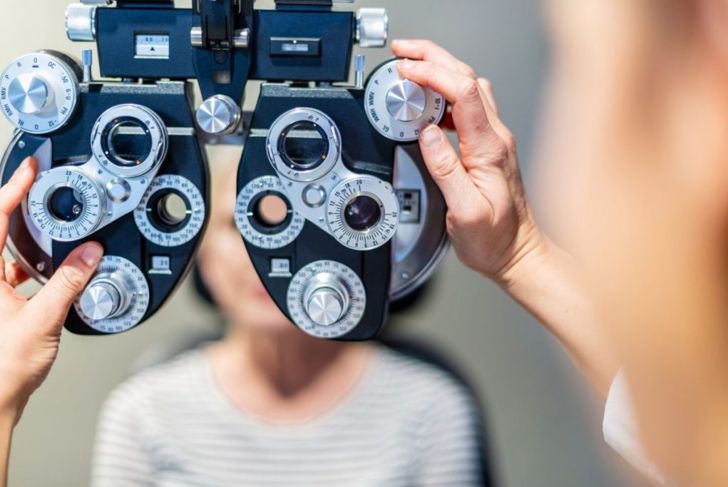Horner’s syndrome is a rare disorder that can affect anyone, regardless of sex, age, ethnicity, or region. The condition has two forms, the most common of which occurs when something interferes with the nerve pathways to the eyes and face. Horner’s syndrome can be a sign of a serious underlying health condition. It can also be genetic and present at birth, but this is extremely rare.
Classic Signs
There are four classic signs of Horner’s syndrome, three of which relate to the eyes. People with Horner’s syndrome have a constricted pupil or miosis. They also experience drooping of the upper eyelid or ptosis and enophthalmos, which is when the eyeball sinks into the eye socket. The fourth sign is anhidrosis, the absence of sweating on the face. These symptoms all occur on the same side of the face as the underlying problem.
Other Symptoms and Signs
The lower eyelid may rest at a higher level than normal, called inverse ptosis. In combination with the drooping of the upper eyelid, this reduces the opening between the upper and lower eyelids. When a person is in darkened surroundings, the normal pupil will automatically enlarge, or dilate quickly to improve vision. For a person with Horner’s syndrome, the affected pupil will take longer to dilate in these conditions, making the difference in pupil size more obvious in the dark. This is called dilation lag.Horner’s syndrome may also cause redness of the affected eye, problems with vision, including double vision, and lower the pressure within the eye. In children with Horner’s syndrome, the iris on the affected side may be a different color than the normal side due to lack of pigment. Other symptoms not related to the eye depend on the underlying condition. These may include difficulty walking, weakness or numbness on one side of the body, pain in the arm or hand, hoarseness, and difficulty swallowing.
Multiple Pathways
The eye is connected to the brain by multiple nerves. There is a pathway of three sympathetic nerves that control the eye starting from the hypothalamus which is a small area at the base of the brain. The nerves follow a complicated route from the brain, down the spinal cord, and through the upper chest, then pass back up the neck beside the carotid artery and through the base of the skull into the eye. If these nerve fibers are interrupted at any point, a person can develop Horner’s syndrome.
First Order Horner’s Syndrome
First order or central Horner’s syndrome occurs the nerves between the hypothalamus passing through the cervical spinal cord in the neck to the chest are interrupted. This may happen due to a tumor or cyst pressing on the nerves, a sudden interruption of the blood supply such as a stroke, or changes to the nerves as in multiple sclerosis.
Second Order Horner’s Syndrome
Second order or preganglionic Horner’s syndrome occurs when nerves that run from the chest to the apex of the lungs and follow the carotid artery in the neck are damaged. Neck or chest trauma from an accident or surgery can cause this type of damage.
Third Order Horner’s Syndrome
Third order or postganglionic Horner’s syndrome happens due to damage or obstruction of the nerve path that travels along the neck to the middle ear and eye. Trauma or extensive surgery to the neck in this area may cause the condition, as can tumors of the base of the skull, disease, surgery of the carotid artery, and blockage or thrombosis of the blood vessels.
Genetic Causes
Researchers believe some cases of Horner’s syndrome are inherited, possibly as the result of an autosomal dominant trait. This means that only a single copy of the abnormal gene is necessary to develop the disorder. Either parent can pass this on to their child, or it may result from a spontaneous genetic mutation. If Horner’s syndrome develops before the age of two, the irises may be different colors, or the affected iris may lack color due to a reduced amount of pigment in the iris.
Differential Diagnosis
A lot of factors contribute to Horner’s syndrome in addition to those mentioned. Anything that causes trauma or damage to the sympathetic nerve fibers that run from the hypothalamus through the neck and chest and up to the eyes can result in the condition.In anisocoria, the pupils are different sizes. This can be harmless but could be a sign of a serious underlying condition. A drooping eyelid may be caused by damage to the oculomotor nerve that raises the eyelid. This cause of ptosis usually results in a more severe effect. Myasthenia gravis, which causes widespread muscle weakness, can also cause ptosis in one eyelid.
Diagnosis
Horner’s syndrome is often diagnosed based on a health history and medical exam and confirmed by an ophthalmologist who performs a thorough eye exam. This often involves eye drops that cause the pupils to either dilate or constrict, enabling the doctor to assess any nerve damage based on differences between the two eyes. Other tests, including MRIs, x-rays, ultrasounds, and CT scans, may also help identify the underlying cause.
Treatment
Treatment of Horner’s syndrome depends on the cause. In some cases, an individual may require surgery to remove a growth or lesion. If examination uncovers a malignant tumor, chemotherapy and radiation are likely necessary.Once the underlying cause has been treated, recovery from Horner’s syndrome is likely. For those with the inherited form of the disorder, genetic counseling is a good idea as the condition may be passed on to any children. The symptoms of this form are also likely to be lifelong.

 Home
Home Health
Health Diet & Nutrition
Diet & Nutrition Living Well
Living Well More
More




















